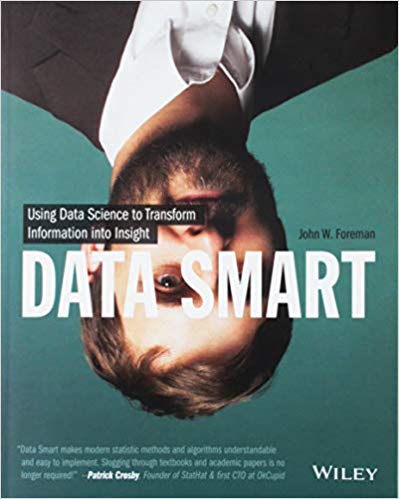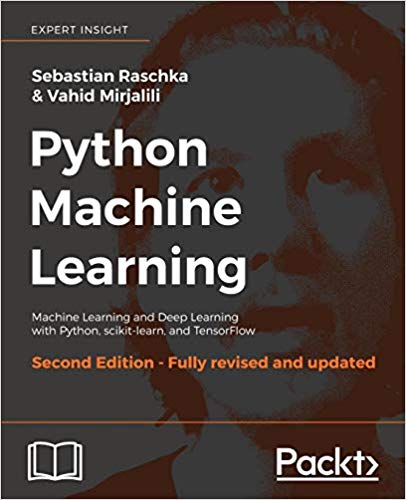 |
| Image by the autowitch. Some rights reserved. Source: Flickr |
So, Saturday morning cartoons are dead.
Last year,
The Washington Post reported,
"This past Saturday, the CW became the last broadcast television network to cut Saturday morning cartoons. The CW is replacing its Saturday cartoon programming, called "The Vortexx," with "One Magnificent Morning," a five-hour bloc of non-animated TV geared towards teens and their families. From the 1960s through the 1980s, Saturday morning time slots were synonymous with cartoons. Broadcast networks and advertisers battled for underage viewers. But that started to change in the 1990s. In 1992, NBC was the first broadcast network to swap Saturday morning cartoons for teen comedies such as "Saved by the Bell" and a weekend edition of the "Today" show. Soon, CBS and ABC followed suit. In 2008, Fox finally replaced Saturday morning cartoons with infomercials. In the 1970s and 1980s, a Saturday morning cartoon viewership could grab more than 20 million viewers. In 2003, some top performers got a mere 2 million, according to Animation World Network," (Sullivan).
Well, I suppose it was only a matter of time before this occurred. Saturday morning cartoons have left the public television stations for good. Of course, this isn't a bad thing. Kids can get their shows on demand from a variety of venues, be it Hulu, Netflix, and the wonders of cable. No need to wake up early in the morning with a bowl of sugary cereal, while your eyes sink in the flashing screens. I think this change is for the best, children should be doing more productive things with their weekends, but nevertheless, a eulogy is necessary.
I can't remember when I first started watching Saturday morning TV, but I
do know that the earliest I'd get up at would be 7:00. A feat that'd be unthinkable for my more jaded self to do on a day off. 7:00, I'm sure, was when they'd play the classic cartoons, like
Popeye. Then there were the principal shows that I followed every week,
Pokemon,
Digimon,
Power Rangers,
Teenage Mutant Ninja Turtles: The Next Mutation, and
Transformers: The Beast Wars. I may have watched more, but I don't remember them. Of course, many of these shows, along with others like
X-Men,
Beetleborgs, and
Spiderman, often played on weekday afternoons. Yet those were reruns. On Saturday morning, you saw things fresh.
Of course, none of these shows was anything particularly intelligent or profound, this was children's entertainment, after all. They just hit on all the right points, reaching those base, animal desires that most children wish to see. Namely, colorful, lively worlds with fantastical characters, be they transforming monsters, super-powered teenagers, or shape-shifting robots. Many of these shows, I imagine, probably introduced a generation of children to science-fiction, fantasy, martial arts, and most importantly for me,
anime. That said, reading
Calvin and Hobbes has made me reflect and question the wisdom of consuming so much silly television at a young age. While I don't believe television to be quite the scourge of civilization that some Luddites may make it out to be, to say it has no effect on us at
all (if even a fleeting one), after habitual viewings, just sounds dishonest.
It's a bit regrettable that
Digimon and
Pokemon were released around the same time. No doubt,
Digimon banked somewhat on the popularity of
Pokemon, but it would always be under
Pokemon's shadow. The reason I say this, is because
Digimon was a smarter show, well, "smarter" by the standards of children's entertainment, but you get the idea.
Pokemon came out in 1998 and
Digimon came out in 1999. While I can't speak for the developments of these shows in Japan, I suspect that Fox Kids licensed
Digimon to capitalize on
Pokemon's success and have an easy cash cow to compete with WB. I mean, as far as they saw it,
Pokemon had monsters and that made money.
Digimon also had monsters, therefore, it too will make money. While
Digimon certainly had its peak, it never became
quite the phenomenon that
Pokemon was. Not where
I lived, anyhow.
If you're too young to remember the
Pokemon craze, then you'd best watch the "Chinpokomon" episode of
South Park. While being in its own right an entertaining episode, it's a fairly accurate satire of how most children and adults reacted to the fad. So much so, that I'm a little embarrassed of my behavior then. In a nutshell, children became consumerist zombies, begging their parents to buy as much
Pokemon-related merchandise as possible. While the adults were gravely confused as to why children found this cartoon so attractive. I recall one adult asking me why the
Pokemon only say their own names and nothing else. Although unlike
South Park, the Japanese weren't interested in using this franchise to cause another Pearl Harbor (or complement our comparative penis sizes).
Pokemon was based on a series of Nintendo video games, which are far more enjoyable than the television show. The point of the game was the capture 'pocket monsters' or 'Pokemon', and use them to fight other Pokemon. So yes, the premise of the franchise is essentially glorified cock-fighting (another
South Park episode comes to mind), but electric Pikachu and fire-breathing Charizard are a far-cry from actual animals. I'm not aware of anyone who has said that they were drawn to cock-fighting, or even animal cruelty in general, because of
Pokemon. So PETA's grotesque claims that
Pokemon encourages such behavior, and the degrees of absurdity with which they attack the series, diminishes, if not destroys any credibility they have as an honest animal rights organization. Try the Humane Society instead.
Digimon, on the other hand, is set in real-life Japan, with Japanese children who fall into the digital world. The digital world is inhabited by digital monsters, or "Digimon". These children, dubbed the "Digi-destined" (because it has been prophesied) partner up with Digimon to fight off the threats to both of their realities. Much like the Pokemon, the Digimon can also evolve. Agumon can turn into WarGreymon and Patamon can turn into Angemon, the difference being that
Digimon evolutions aren't permanent and didn't always work in a pinch.
Digimon also dealt with more mature themes than
Pokemon, like divorce, romance, and death. Yes, much of
Digimon devolved to monster-of-the-week plots and very cliched characters, but some clever people were able to put their mark on it. One was Mamoru Hosoda, who would later gain fame for the films
Summer Wars and
The Girl Who Leapt Through Time. He got his debut directing the "Four Years Later" or "Our War Game" section of
Digimon: The Movie. Even if you don't like
Digimon, you have to appreciate the physical realism that Hosoda brought to the series, and surreal, hypnotic design of the World Wide Web that were a clear influence on
Summer Wars. In the English dub, this is all dubbed over with a pop soundtrack that includes The Barenaked Ladies and The Mighty Mighty BossTones. It actually kind of fit, somehow. The other talent to touch
Digimon was writer Chiaki J. Konaka, who wrote mind-bending screenplays for
Texhnolyze,
Rahxephon, and
Serial Experiments Lain. His pen went behind the third season,
Digimon Tamers, which was also the darkest. The season is rather meta, with the past two seasons being a television show in this universe. The main character creates his own Digimon and has to own up to the responsibilities of that. I can't say I remember much from this season, except that it was pretty gloomy in comparison to the other two. So, to summarize,
Pokemon was about fighting for fun,
Digimon was about fighting for glory.
As dumb as
Pokemon and
Digimon were, they're probably the best examples in recent memory of anime becoming mainstream entertainment in the United States. I mean
hell, I sang the
Pokemon theme song in music class, and not the TV-edited version, either. Yes,
Dragonball and
Sailor Moon ran close behind, but they were aimed at a slightly older demographic, so they didn't get quite as much accessibility as those whose cerebrums were still wet. That isn't to say that
Dragonball and
Sailor Moon weren't accessible, or even all that unpopular, but again, I didn't sing the
Sailor Moon theme song in music class.
Probably the most significant anime I saw on Saturday morning was
The Vision of Escaflowne. It didn't get a long run, I only recall seeing two episodes. Anyone who's seen
Escaflowne knows that it's not for kids, so the editors went to work on Disneyfying it. Yet as defanged and bastardized as this version was, those two episodes still left an impact on me. One so strong, in fact, that long after I had forgotten the title of the show, the image of Prince Vaughn sprouting his glowing, white wings haunted the dark corners of my brain.
Escaflowne was really weird in comparison to all the
Pokemons running around. The characters had detailed and mature designs, while the atmosphere was enigmatic and quiet. Even though I didn't rediscover
Escaflowne until over a decade later, it was my first glimpse into the world of adult anime.
There's not much I can say about
Teenage Mutant Ninja Turtles: The Next Mutation because I can barely, and I mean
barely recall it. I can't even reproduce a full episode in my mind. All I know is that they had a female turtle, Venus de Milo, and that's about it. The show has aged terribly, and I doubt if I could stomach a full half hour of the stuff nowadays. Yet, nevertheless, this was the series that introduced my generation to the Turtles. (I
think that's a good thing.) I know that the only episode of
Ninja Turtles that left something of an impression on me, was their crossover episode with the
Power Rangers, who were then, "lost in space." Again, details are fuzzy, but at the time, it was a pretty cool event.
Now
Power Rangers was a show. To see young people like myself fight monsters in colored spandex and ride in giant robots inspired by prehistorical creatures, was all my hyper-active brain needed. Much like
Pokemon,
Power Rangers was
also very repetitive in form, but unlike
Pokemon, Power Rangers is still plenty of fun to watch. The campy aesthetic coupled with MTV style editing, a slapstick
Saved By The Bell background, and hard rock soundtrack are all too much to resist. If you don't take it too seriously, which you shouldn't, the
Power Rangers is entertainment for entertainment's sake. Kitsch, yes, but if you know what you're going in for, then you might as well have fun with it.
I was introduced to the
Transformers through the
Beast Wars series. So my understanding of Optimus Prime was not of a semi-truck that could transform into a robot, but of a
gorilla that could transform into a robot.
Beast Wars tried to do something different with the premise of alien robots who disguise themselves as vehicles, being alien robots who could disguise themselves as giant animals. There were also no annoying humans on the planet, just aliens on an alien planet, so the plot was not restricted by the red tape that previous and later
Transformers installments dealt with. Not only was Optimus Prime a gorilla and Megatron a T-Rex, but
new characters were also thrown into the mix. My favorite being Cheetor, who, if you couldn't already guess is a cheetah. His personality was very much like Johnny Storm from the Fantastic Four, arrogant, quick-tempered, and fun-loving.
Beast Wars was so popular that it got a sequel series,
Beast Machines. Things turned darker, with the Autobots on the lam in a futuristic city, and their designs changed to reflect their more robotic predecessors. It was awesome. At my babysitter's house, where I watched much of these shows, we played with
Beast Wars toys, and let me tell you, they were as frustrating to transform as all hell. In the commercials, they made it look so easy. I mean, does Hasbro really expect children to be able to successfully transform the Cheetor into assault mode in between commercial breaks?
For what it's worth, I
did try watching the original 80's cartoon, but I was older, and so, didn't care for it. I liked the theme song, though. Then there was that movie which had talents like Leonard Nimoy and Orson Welles. An irony that Welles's debut was Charles Foster Kane, and his final performance was Omnicron. The movie is very much a zeitgeist of what was being marketed to boys of the 80's, over-the-top action and loud rock music. How much has changed? While I'm at it, I may as well address the elephant in room, Michael Bay. Yes, his
Transformers films are all very bad, but the first one, at least, was
watchable. It was a decent action film with neat effects, but held many of the problems that were multiplied over the next couple of movies. What I find more offensive than the bad scripts, however, is the fact that Bay thinks it's appropriate to market towards kids, or
any human being, a franchise littered with excessive violence, racial insensitivity, and crude, blatant misogyny. In fact, I'd argue that these terribly unpleasant and immoral films do
far more harm to the minds of children than the cheap shows I'm discussing here.
Here's a sidewinder,
Spongebob Squarepants. Yes, I distinctly remember watching the series premiere of "Bubblestand", in my mother's bedroom, on a Saturday morning. Now,
Spongebob didn't always play new episodes on Saturday mornings, but I watched the series religiously since that first viewing, so I felt the need to reference it. It's hard to defend the ungodly receptacle of garbage that holds the banner of
Spongebob today. Ever since Stephen Hillenberg left, the show produced some of the worst writing to ever grace the televised screen, it's real nauseating stuff. I blame Nickelodeon's producers more than I do
Spongebob's writers, because a premise can only work for so long before it grows stale. Point of reference,
The Simpsons. Though
at least
Homer still has some dignity left on him and after two decades, no less. Spongebob, on the other hand, is no longer the quirky, nervous, and hopelessly naive character that endeared him to audiences on his first appearance. Now, he's a blubbering twit, a moronic and deranged man-child, whose every action is designed to irritate the living
hell of you. The masturbatory excess of Mr. Squarepants, along with his now depraved and unsightly "friends" will not recover from this milking from a long deceased cow.
Believe it or not, my interest in Saturday morning cartoons extended into middle school. Why? Perhaps it was out of a desire to relive the nostalgia of my former years, even though I knew what I watched was garbage. At the time, I was very much addicted to television. I watched it because I was bored, and terribly lazy. I not only lament the fact that I wasted much of my youth consuming television, but that it was
bad television. Surely, I could've benefited from some
Star Trek or
The Twilight Zone episodes. That said, there was one show I watched religiously every Saturday morning with great fondness, about as much as
Pokemon,
Spongebob, or
Beast Wars, and that was
Yu-Gi-Oh!Yu-Gi-Oh! was more than just an anime to me, it was also a trading card game, and a very fun one, might I add. A game in which one could summon monsters, cast spells, or spring traps against your opponent. Some monsters had special abilities, while others could fuse to create greater monsters. It was a lot of fun.
However,
Yu-Gi-Oh! initially began as a tribute to tabletop games in general. The protagonist, Yugi Moto, is a shy high-schooler with multicolored spiky hair (it's an anime, remember?). He solves an Egyptian artifact known as the Millennium Puzzle. Inside of this puzzle is trapped the soul of a 2000 year old pharaoh known as "The King of Games." Whenever Yugi finds himself in life-threatening trouble, the spirit of the pharaoh possesses him, and challenges his opponent to a deadly game. A variety of different ones were played, like one inspired by
Dungeons and Dragons. The card game, was one among many, but it stuck, being the most popular. So the anime focused on this aspect for the story.
That said, the anime is about as corny as most Saturday morning television, and the 4Kids chop-up didn't help.
Yu-Gi-Oh! was very formulaic, featuring Yugi dueling an opponent in a game of cards and almost always winning (unless blackmailed by threats of suicide). Yet, we didn't watch to
Yu-Gi-Oh! to see who would win, we watched the show to see the different strategies employed by the cards. Be it the destructive blowback from Mirror Force, or the dreaded one turn kill of Exodia. The simplicity of the game when it first began is now enviable, a time when summoning a high powered Dark Magician or Blue Eyes White Dragon could win you the game. The game has since mutated into a convoluted speed contest, with nonsense terminology, conflicting rules, embarrassingly high prices, and a rapidly growing roster of cards that may very well lead to an implosion. If there was one good thing to come out of
Yu-Gi-Oh!, it's
Yu-Gi-Oh!: The Abridged Series by Martin Billany (aka LittleKuriboh). An abridged series is when someone makes an edited version of a show and overdubs it with humorous and often meta voiceovers. Some of the best moments are when Billany constantly notes the borderline hyperbole of seriousness with which people take a children's card game (who's rules are often broken for plot convenience). This isn't even
touching the many lines that are popular amongst the otaku fandom, like "Screw the rules, I have money!"
On a side note, don't you find it a bit bizarre that we define our fading childhood memories by the films, television, and music that we consumed then? Nostalgia has never been so openly fetishized in America as it has now. The culprit behind this is, of course, the Internet. Music critic Simon Reynolds, who wrote
Retromania: Pop Culture's Addiction To Its Own Past, has said,
"It was gradual, but with the arrival of the Internet, and broadband access, and the rise of this kind of strange collective archiving thing, [looking backward] became irresistible. Now people put stuff on YouTube because it feels like they're doing something worthwhile and this enormous archive has developed. You're young, but I try to remember what it was like when it was actually really hard to get hold of information. If you wanted to look at old magazines, you had to go to the library and look at microfilms. Now all the records in the known universe are basically accessible at the click of a mouse. Don't you think that's weird? I think it's weird — but I have something to compare it to. I remember living in a culture of cultural scarcity," (Salon).
I agree with Reynolds here. Nostalgia is popular because it's so accessible. I probably wouldn't have been able to find
Escaflowne were it not for the Internet. I also think that this nostalgia hunt comes from the effects that 9/11 had, and still
does have on the American psyche. The War on Terror, and all that came after it, in the context of the Information Age, no less, made the world a complex and ambiguous place. The truth, however, is that it was always like this, we just want to believe that there was a magical, Reaganesque America where the mornings never ended. It's worse yet when one was a child, and could've hardly comprehended events grander than the events on your television screen. Now, a sort of
cult has developed that puts the cartoons of the past on a pedestal, with entitled fans claiming that newer versions can never be as good as the older ones. The worst of it comes when Hollywood taps into this nostalgia for money, and is answered with cries that Hollywood "ruined my childhood." Yet this nostalgia that people hopelessly flee to is only fueling the film industries to make more adaptations. A
Catch-22. Reynolds articulated some of these issues,
"This endless regurgitation of the familiar is dulling and vaguely depressing. It's nice to think there's a future for music, for example, and that people will do things that later generations can work with and take somewhere. I think if the preponderance of the music scene is based around recycling and revivalism, then it's like bad farming. Basic common sense in farming is that you sow as well as reap. If you're just reaping from the past, you're not really giving anything back. Of course, music and culture don't necessarily work in the way farming does, and ideas don't get exhausted in the same way natural resources do, but I think it's important for the ongoing project of music to at least try to come up with things that have never been done before. Young musicians, in particular, seem to be way more fascinated by the past than the future. That's my main worry: Where is it going? Is this a practice that is infinitely sustainable? At this point, we're well into the '90s revival, and then it will be time for the naughties revival. It just seems a bit boring that that's just how it's going to proceed," (Salon).
Our culture is in a feedback loop, stuck in the 80's and 90's, where twenty-somethings complain about how old they've gotten and indulge in listicles on the Internet that seem to confirm this bias. It's time that we stopped defining ourselves and our memories solely on the basis of the crappy shows that we were too dumb to turn off. Yes, some of them were fun, but let's not kid ourselves here, these programs weren't masterpieces. I had a good childhood, not because I had the privilege of eating soggy marshmallow cereals too close to a television screen, but because I had loving friends, teachers, and family. In any case, childhood is overrated. Some of us had terrible ones. I, for one, am
glad to be older. Isn't it grand to be able to tell the difference between pearls and swine? It's easier to look back than it is to look forward. So unless you want Hollywood to reboot
Spiderman every three years, I suggest we admit that the 80's and 90's were just as mundane as any other decade, and start looking ahead.
I wrote this eulogy happily.
BibliographyReynolds, Simon. Interviewed by Thomas Rogers. "Will nostalgia destroy pop culture."
Salon, August 5, 2011. Web.
http://www.salon.com/2011/08/05/retromania_simon_reynolds_interview/Sullivan, Gail. "Saturday morning cartoons are no more."
The Washington Post, September 30, 2014. Web.
http://www.washingtonpost.com/news/morning-mix/wp/2014/09/30/saturday-morning-cartoons-are-no-more/








